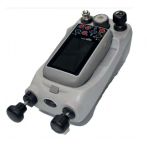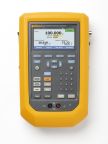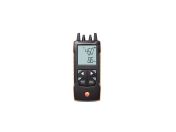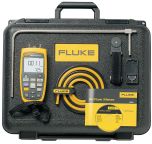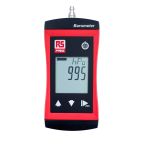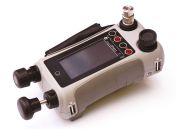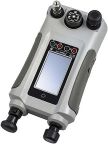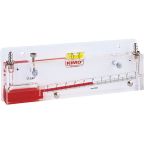A pressure test is a crucial process that involves applying controlled pressure to a system or vessel to verify its integrity and identify potential leaks or weaknesses. Pressure measurement is vital for process management and control, ensuring safety and efficiency when working with both gases and liquids.
A reliable pressure tester or a precise pressure measurement tool is essential for obtaining accurate readings. From preventing temperatures rising out of permitted ranges to stopping potential explosions from gas build-up, reliable pressure test equipment and pressure measurement instruments prevent costly mishaps and enable optimal operation in a variety of industries.
Types of Pressure
Pressure is classified into three types:
- Fluid pressure: Fluid pressure is the force exerted by a fluid (liquid or gas) per unit area. It represents the internal force within a fluid that acts perpendicularly to any surface it contacts. This pressure is generated by the weight of the fluid or by external forces applied to it. In hydraulic systems, it's the force transmitted through a confined liquid. In pneumatic systems, it's the force within a compressed gas.
- Absolute pressure: Absolute pressure is the total pressure at a point, measured relative to a perfect vacuum (zero pressure). It comprises both the atmospheric pressure and the gauge pressure. It represents the true pressure exerted by a fluid or gas, regardless of surrounding atmospheric conditions. This measurement is crucial when external pressure variations would impact the result of a test or process.
- Gauge pressure: Gauge pressure is the pressure measured relative to the ambient atmospheric pressure. It represents the difference between the absolute pressure and the local atmospheric pressure. This type of pressure is commonly used in applications where the pressure difference is more relevant than the absolute pressure, as in tire inflation or most industrial processes. It's important to remember that atmospheric pressure changes, thus gauge pressure readings will change as well.
Types of Pressure Measuring Devices
There are a wide range of pressure measurement instruments. Here are some of the most commonly used types and what they are used for:
- Manometers: Handheld devices capable of measuring gas, air, and fluid pressure. Used for troubleshooting issues and locating leaks. Offering a wide range of pressure measurements to ensure you have the correct manometer for your job.
- Pressure Calibrators: Devices that not only measure pressure but are used to calibrate (verify) other pressure measurement instrument's readings. They are highly accurate instruments and can have multiple advanced features running at one time, such as a regulator.
- Pressure Transducers: Electronic devices that convert pressure into an electrical signal. Widely used in industrial automation and control systems, they provide continuous pressure measurement and feedback for processes ranging from hydraulic systems to chemical processing.
- Bourdon Tube Gauges: A mechanical pressure measuring device that uses a curved tube to measure pressure. As pressure increases, the tube straightens, moving a pointer on a dial. These gauges are robust and widely used in industrial settings for monitoring pressure in steam, liquid, and gas systems.
- Diaphragm Gauges: Devices that use a flexible diaphragm to measure pressure. The diaphragm deflects in response to pressure changes, which are then translated into a reading. These gauges are particularly useful for measuring low pressures and are often used in applications where sensitive pressure measurements are required, such as in medical devices and HVAC systems.
A pressure measurement tool functions by converting pressure into a measurable output. The specific mechanism varies depending on the tool's type:
- Mechanical Devices (e.g., Bourdon Tube Gauges)
- Pressure causes a mechanical element (like a curved tube) to deform.
- This deformation is translated into a pointer movement on a dial, indicating the pressure.
- Electronic Devices (e.g., Pressure Transducers)
- Pressure is applied to a sensor (like a diaphragm).
- The sensor's deformation changes an electrical property (e.g., resistance).
- This change is converted into an electrical signal (voltage or current), which is then processed and displayed as a pressure reading.
- Manometers
- Utilises a liquid within a U tube.
- Pressure applied to one side of the liquid column forces the liquid to move, and the difference in height between the two columns is measured, indicating the pressure.
Calibration & Standards of Pressure Measurement
Accurate pressure measurement relies on proper calibration and adherence to established standards. Calibration is essential to ensure that a pressure measurement tool, device, equipment, or instrument provides accurate readings.
A common method involves using a dead-weight tester, which applies known pressures using calibrated weights on a piston. Additionally, pressure calibrators are used to verify the readings of other pressure measurement devices, ensuring consistency and reliability across various applications.
International Standards for Pressure Measurement Commonly Used in Hong Kong:
Hong Kong does not have domestic standards for pressure management devices. Instead, it uses a variety of internationally recognised standards depending on the industry or application. The Standards and Calibration Laboratory (SCL) is responsible for ensuring that pressure management devices meet international benchmarks.
To ensure your pressure measurement tool or test device is properly calibrated, verify that it is calibrated by the SCL and meets these internationally recognised standards:
American Society of Mechanical Engineers (ASME) Standards:
- B40.100: Guidelines for pressure indicating dial type and digital indicating gauges, diaphragm seals, snubbers, and pressure limiter valves.
- PTC 19.2: Instructions for accurate pressure value determination in performance testing. Provides guidance on instrument selection, calculations, and uncertainty assessment, and also information on field devices like piston gauges, manometers, and vacuum instruments.
European (CEN) Standards:
- EN 472: Pressure gauge vocabulary.
- EN 837-1: Bourdon tube pressure gauges (dimensions, metrology, requirements, and testing).
- EN 837-2: Selection and installation recommendations.
- EN 837-3: Diaphragm and capsule pressure gauges (dimensions, metrology, requirements, and testing).
These standards provide guidance on measurement methods, data transmission protocols, instrumentation setup, and uncertainty evaluation. They assist in evaluating measurement uncertainty based on current engineering knowledge and instrumentation specifications.
Industrial Applications of Pressure Testers
Aerospace:
In aerospace, pressure test equipment is critical for evaluating the structural integrity of aircraft and spacecraft components. Specifically, pressure transducers and high-precision pressure measurement instruments are used to conduct rigorous tests on fuel systems, hydraulic lines, and cabin pressurization systems, ensuring safety under extreme atmospheric variations.
Automotive:
The automotive industry relies heavily on fuel pressure testers and pressure test kits to diagnose and maintain engine performance. These tools are essential for verifying fuel delivery systems, brake lines, and tire pressures, where accurate pressure measurement directly impacts vehicle safety and efficiency.
Oil and Gas:
In the oil and gas sector, pressure test devices are indispensable for pipeline integrity and wellhead safety. High-pressure hydraulic pressure testers and specialised pressure measuring devices are employed to assess the strength and leak resistance of pipelines, valves, and drilling equipment, preventing catastrophic failures.
Chemical Processing:
Chemical processing plants utilize a variety of pressure test tools to monitor and control reactions within vessels and pipelines. Pressure measurement instruments, including diaphragm gauges and electronic transmitters, are crucial for maintaining precise pressure levels in corrosive and hazardous environments, ensuring product quality and safety.
HVAC (Heating, Ventilation, and Air Conditioning)
Water pressure testers and low-pressure manometers are vital in HVAC systems for verifying ductwork integrity and refrigerant line pressures. These pressure test tools ensure optimal system performance and prevent leaks, contributing to energy efficiency and indoor air quality.
Pharmaceuticals
In pharmaceutical manufacturing, precise pressure measurement is essential for maintaining sterile environments and controlling fluid transfer in production processes. High-accuracy pressure transducers and calibrated pressure test equipment are used to verify the integrity of containment systems and ensure product purity.
Pressure Test Device, Manufacturer, Supplier & Distributor in Hong Kong
RS Hong Kong is a trusted supplier and distributor of pressure test devices, offering a wide selection of high-quality pressure measurement instruments and pressure test equipment from reputable brands. Our range includes manometers, pressure calibrators and other pressure calibrator accessories from Druck, Fluke, Comark and more.
How Delivery Works at RS Hong Kong
RS Hong Kong’s efficient delivery services are designed to provide a seamless and convenient shopping experience. To learn more about our delivery options and estimated delivery times, please visit our delivery information page.




